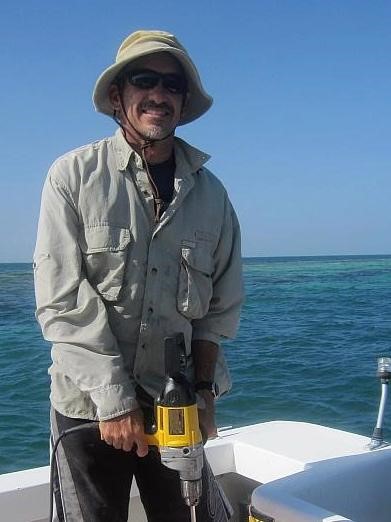The Takeaway: Post-disaster coral reef damage assessment and reattachment.
Overview
More than 11 percent of Puerto Rico’s coral reefs were damaged from Hurricanes Irma and Maria. NOAA and partners assessed damages and conducted emergency reattachment of corals, resulting in approximately 16,000 corals over 63 sites in Puerto Rico and the U.S. Virgin Islands. Learn more about this disaster recovery effort, which included natural resource damage assessment and recovery actions—a first for these federal funding sources.

Lessons Learned
- Develop a response plan ahead of time. A rapid post-storm response will allow for more corals to be reattached prior to loss or death. The key is to develop a response plan and identify resources in advance, such as a hurricane response plan and an updated list of response capacity, both in the geographic region and outside of it.
- Restoration requires communication and coordination. Regular communication and data coordination between the assessment teams and the coral reattachment teams is essential to guiding efficient restoration.
- Quantitative information is critical. Quantitative information on emergency reattachment efforts is important to include for both accurate representation of restoration efforts and subsequent monitoring to evaluate success.
- Not all coral is suitable for reattachment at a specific location. In some cases, the habitat at the damaged site is not possible (i.e., reduced to rubble). In those cases, the coral fragments are collected and moved to an alternative site better suited for long-term survival.
The Process
Impacts to Corals
Puerto Rico suffered significant damages as Hurricane Irma, a category 5 hurricane, passed just north of San Juan in September of 2017. Just two weeks later, Hurricane Maria, a massive category 4 storm, made landfall in Puerto Rico. The hurricanes caused catastrophic damages throughout the territory.
Michael Nemeth, a coral restoration specialist with NOAA’s Restoration Center, shares that “the constant battering of large, powerful waves that were brought to shore by the hurricanes severely damaged the local population of Elkhorn coral and Endangered Species Act-listed corals.”
On average, 11 percent of the corals were significantly damaged, with some sites destroyed. The northeast (including Culebra), north, Vieques, and west regions showed the highest levels of damaged corals, since they experienced the highest wave energies due to the hurricanes’ paths.
Post-Disaster Recovery Planning
Puerto Rico applied for disaster assistance, which activated federal resources under FEMA’s Natural and Cultural Resources support functions—a framework used to facilitate problem solving, improve access to resources, and foster coordination. As part of the recovery, they were required to submit a recovery plan to Congress.
During the recovery plan development, there were several “firsts” related to how federal funds were used. Puerto Rico requested that disaster recovery funds be used to assess the impacts of their natural resources. FEMA issued a mission assignment to NOAA to conduct coral reef damage assessments and perform emergency restoration activities.
Coral reefs can substantially reduce coastal flooding and erosion by dissipating as much as 97 percent of wave energy (USGS, 2019). Research like this on the effectiveness of coral reefs to absorb wave energy helped inform FEMA’s decision to support coral reef damage assessment and broken coral reattachment. This work was performed under the Natural and Cultural Resources recovery support function, for which NOAA is a supporting organization.
Assessing Damages
The damage assessment and emergency coral reattachment was a cooperative effort among Puerto Rico Department of Natural and Environmental Resources, NOAA National Centers for Coastal Ocean Science, NOAA Restoration Center, NOAA Coral Reef Conservation Program, FEMA, local coral conservation organizations, and support contractors who provided boats and divers for field work. They worked together to develop project objectives, damage assessment methods, and the budget for the mission assignment. Michael Nemeth specializes in coral reef restoration, and his role was to provide knowledge and experience to scope, plan, and execute the damage assessment and emergency restoration activities.
“Partners were critical to getting the work done and providing local information,” Michael says, “since there’s lots of coordination and planning.”
The team’s work included describing the status of the coral reefs post Hurricanes Irma and Maria, identifying sites where coral could be reattached, and identifying coral reefs that would benefit from long-term restoration.
To do this, two teams worked on the assessment and coral reattachment work. The area sampled included all known shallow water coral reefs surrounding mainland Puerto Rico, Vieques, Culebra, and the islands within the northeast reserve corridor. They chose shallow coral reef habitats (one- to seven-meter depths), since reconnaissance surveys showed they were the most impacted.
“To help in our sampling, we adapted the National Coral Reef Monitoring Program’s sampling method, which has been used since 2014 to monitor corals and fishes surrounding Puerto Rico,” Michael says. “We knew the corals along the hurricane paths would have the highest damages. However, within a given region there was considerable variability of damage among sites, likely due to a particular site’s exposure—that is, orientation with respect to the dominant wave direction—or amount and species of corals at that site.”
The next step was to conduct in-water diver surveys to identify characteristics such as number of loose corals, dominant reef habitat type, damage to a site, recommendation for emergency restoration, and recommendations for inclusion in long-term restoration site.
Emergency Restoration to Reattach Live Corals
The goal of emergency restoration was to rescue loose coral fragments and colonies within the site by returning the coral to a proper orientation and securing it to the bottom. Appropriate locations were identified to reattach loose fragments, so as not to disturb the existing undamaged corals.
Experience and published research has shown that reattaching corals significantly increases their chance of survival compared to those left unattached and vulnerable to future storm waves. By conducting emergency restoration, the loose, at-risk corals can be reattached to the reef substratum to minimize the overall hurricane damage at local scales. It would take decades to regrow the large corals that were impacted. Cement was used to reattach corals to the substrate, which is a proven viable and cost-effective method. To help with secure reattachment of corals, the team gathered at-risk, loose corals, cleaned the reef surface of algae and sediment, and adhered the corals to open, hard-bottom surfaces on the reef with cement. In some cases, corals could not be reattached, due to the state of the habitat, and those fragments were moved to an alternative site that was better suited for long-term survival.
Outcome
The assessment team surveyed 153 sites in 38 field days, which equated to a total of 80,297 corals that were recorded for damage condition by the assessment team. Approximately 16,000 corals in total were reattached at 63 sites.
Next Steps
Michael says that some sites would benefit from replanting the reef with propagated corals from nurseries to restore, or potentially enhance, the protective services the reefs provide. The team is also identifying potential long-term restoration sites. They are also monitoring some sites to see if the coral survived after reattachment.
